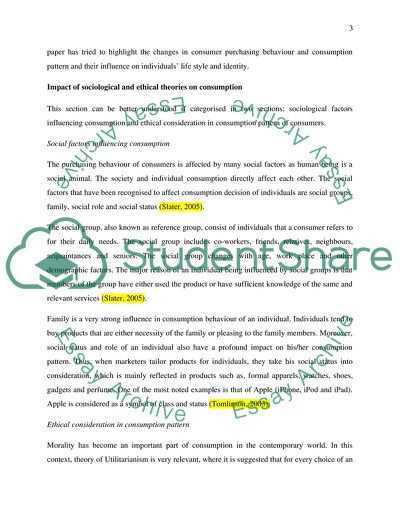Cite this document
(How Consumption Is Reflected in an Individuals Lifestyle and Shapes Coursework Example | Topics and Well Written Essays - 2500 words, n.d.)
How Consumption Is Reflected in an Individuals Lifestyle and Shapes Coursework Example | Topics and Well Written Essays - 2500 words. https://studentshare.org/human-resources/1828981-discuss-how-consumption-reflects-and-shapes-our-lifestyle-and-identity
How Consumption Is Reflected in an Individuals Lifestyle and Shapes Coursework Example | Topics and Well Written Essays - 2500 words. https://studentshare.org/human-resources/1828981-discuss-how-consumption-reflects-and-shapes-our-lifestyle-and-identity
(How Consumption Is Reflected in an Individuals Lifestyle and Shapes Coursework Example | Topics and Well Written Essays - 2500 Words)
How Consumption Is Reflected in an Individuals Lifestyle and Shapes Coursework Example | Topics and Well Written Essays - 2500 Words. https://studentshare.org/human-resources/1828981-discuss-how-consumption-reflects-and-shapes-our-lifestyle-and-identity.
How Consumption Is Reflected in an Individuals Lifestyle and Shapes Coursework Example | Topics and Well Written Essays - 2500 Words. https://studentshare.org/human-resources/1828981-discuss-how-consumption-reflects-and-shapes-our-lifestyle-and-identity.
“How Consumption Is Reflected in an Individuals Lifestyle and Shapes Coursework Example | Topics and Well Written Essays - 2500 Words”. https://studentshare.org/human-resources/1828981-discuss-how-consumption-reflects-and-shapes-our-lifestyle-and-identity.


